- News
- Reviews
- Bikes
- Accessories
- Accessories - misc
- Computer mounts
- Bags
- Bar ends
- Bike bags & cases
- Bottle cages
- Bottles
- Cameras
- Car racks
- Child seats
- Computers
- Glasses
- GPS units
- Helmets
- Lights - front
- Lights - rear
- Lights - sets
- Locks
- Mirrors
- Mudguards
- Racks
- Pumps & CO2 inflators
- Puncture kits
- Reflectives
- Smart watches
- Stands and racks
- Trailers
- Clothing
- Components
- Bar tape & grips
- Bottom brackets
- Brake & gear cables
- Brake & STI levers
- Brake pads & spares
- Brakes
- Cassettes & freewheels
- Chains
- Chainsets & chainrings
- Derailleurs - front
- Derailleurs - rear
- Forks
- Gear levers & shifters
- Groupsets
- Handlebars & extensions
- Headsets
- Hubs
- Inner tubes
- Pedals
- Quick releases & skewers
- Saddles
- Seatposts
- Stems
- Wheels
- Tyres
- Health, fitness and nutrition
- Tools and workshop
- Miscellaneous
- Cross country mountain bikes
- Tubeless valves
- Buyers Guides
- Features
- Forum
- Recommends
- Podcast
BUYER'S GUIDE
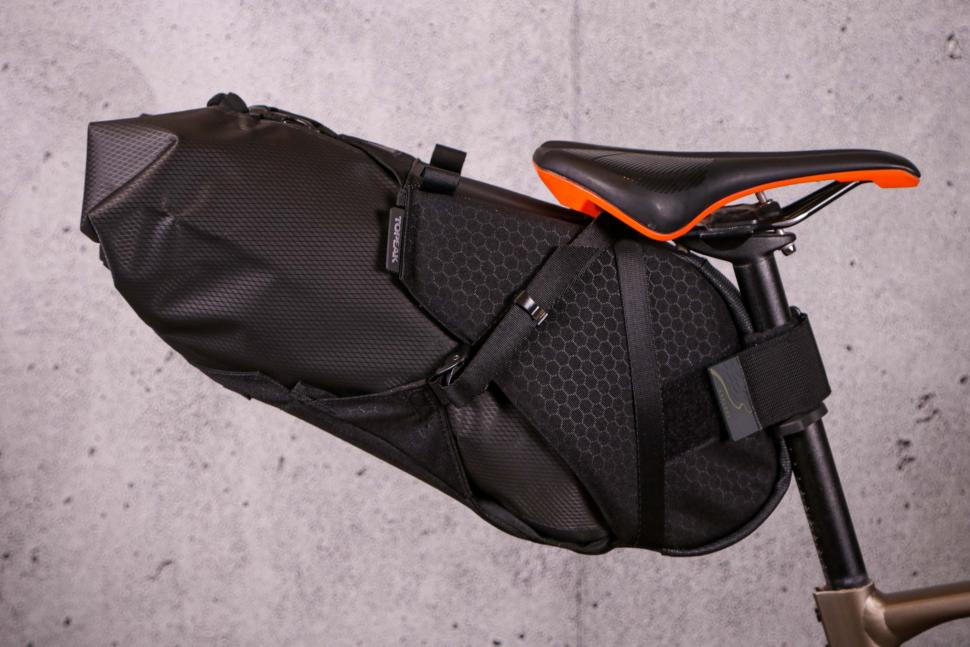 2022 Topeak Backloader X 10L.jpg
2022 Topeak Backloader X 10L.jpgBest bikepacking bags 2025 — how to choose lightweight luggage for cycling adventures
If you plan to travel fast and light, or just don’t like clutter, bikepacking bags are the modern alternative to panniers for multi-day rides. They strap on to various parts of the bike — the saddle, top tube and handlebars are favourite — swerving the need for racks. We've thrashed laden bikes over the hills of Wales, Scotland and England, and slept in woods, fields and ditches to find these, the best bikepacking bags you can buy.
- Best seatpack system: Wildcat Tiger Drover Saddle Harness — Buy Now for £72.00 from Wildcat | Find out more
- Best one-piece seatpack: Topeak BackLoader 10-litre seat pack — Buy Now for £44.99 from Merlin Cycles | Find out more
- Best frame bag: Ortlieb Frame-Pack Toptube — Buy Now for £89.00 from Spa Cycles | Find out more
- Best frame-filling bag: Apidura Backcountry Full Frame Pack — Buy Now for £144.00 from Condor Cycles | Find out more
- Best bar bag: Route Werks The Handlebar Bag — Buy Now for £165.00 from Route Werks | Find out more
- Best value bar bag: Topeak BarLoader — Buy Now for £32.99 from Amazon | Find out more
- Best small bag: Restrap Top Tube Bag — Buy Now for £32.00 from Sigma Sports | Find out more
- Best fork bag: Free Parable Gorilla Clip, Cage and Bag system — Buy Now for £63.00 from Amazon | Find out more
- Best top tube bag: Apidura Racing Long Top Tube Pack — Buy Now for £72.00 from Condor Cycles | Find out more
- Best money-no-object bikepacking bag: Tailfin AeroPack Carbon — Buy Now for £299.00 from Tailfin | Find out more
By limiting the amount of stuff you can carry, bikepacking bags force you to travel light; you can't take the kitchen sink if there's nowhere to put it.
The most common bikepacking bag is a large saddlebag; capacities go up to 20 litres. Top-tube bags and handlebar bags are also common; the latter is a popular spot for a sleeping bag. You can add small bags as necessary for snacks and sundries.
Tests strongly suggest backpacking bags are aerodynamically better than panniers because they don't increase the frontal area of the bike.
The best bikepacking bags
Best seatpack system: Wildcat Tiger Drover Saddle Harness — Buy Now for £72.00 from Wildcat
The Wildcat Tiger Drover Saddle Harness is designed to hold a drybag securely beneath your saddle, and makes for an incredibly secure and lightweight bikepacking setup. The design makes packing easy and quick, although the initial setup can take a while.
Tester Matt writes: “With everything installed, the overwhelming impression is how secure the bag is – there's virtually no side to side movement. Even when riding and purposefully trying to initiate some sway, it stays completely solid.
“With regular saddlepacks I usually remove the whole bag from the bike to pack effectively, but being able to leave the harness in place really speeds things up. Packing can be several minutes faster.
“When bikepacking there is little more frustrating than a saddle bag that is constantly swaying, and the Wildcat Tiger Drover Saddle Harness has that completely under control. It's a system that works well, makes packing easier and makes for a usefully faster getaway too.”
Pair it with the Wildcat Tapered Drybag and you've got a low-weight, sensibly-priced and brilliantly easy-to-use system.
Best one-piece seatpack: Topeak BackLoader 10-litre seat pack — Buy Now for £44.99 from Merlin Cycles
It's likely that a saddle bag is the first bit of kit you're going to look at buying if you want to get into bikepacking or light touring, and Topeak's BackLoader would be a good investment. It's a versatile piece of luggage that will serve you well when attached to a racing, commuting, touring or mountain bike.
The BackLoader is really easy to use and its simple hook and loop attachment helps to keep weight down. It has its cons, but is certainly worth considering for a credit card tour or the like, and it's excellent value.
The BackLoader is available in three different sizes: six, ten and fifteen litres. All come with an internal waterproof bag with a valve so you squeeze out surplus air.
Read our review of the Topeak BackLoader 10-litre seat pack
Find a Topeak dealer
Best frame bag: Ortlieb Frame-Pack Toptube — Buy Now for £89.00 from Spa Cycles
Ortlieb's Top Tube Frame Pack offers four litres of space and the high quality, fully waterproof design you expect from Ortlieb. It has lots of adjustment for fitting and makes a good option for riders looking to keep their bottle cages accessible.
Ortlieb is renowned for waterproof bags, and this one is seriously waterproof. It meets the IP67 standard, which means it gets the highest possible dustproof rating and waterproofing that totally resists 30 minutes in one metre of water.
Bear in mind anything meeting the IPX5 standard is also 'waterproof,' but that only involves three minutes of hosing. In other words, IP67 is impressive, especially for something with a zip.
Read our review of the Ortlieb Frame-Pack Toptube
Find an Ortlieb dealer
Best frame-filling bag: Apidura Backcountry Full Frame Pack — Buy Now for £144.00 from Condor Cycles
The Apidura Backcountry Full Frame Pack is an excellent way to carry a lot of gear. It's easy to fit and use, is made from bombproof materials, is fully waterproof and carries a lifetime warranty – the price is high, but it's fair.
Tester Mike writes: “Loading it with an overnight's worth of water bladder, cooking gear, food and a jacket produces no noticeable bulging, despite the lack of an internal divider. As it's only 313g, I didn't bother removing the pack from my gravel bike for a few months. It gave me a huge amount of space for tools, clothing and food for day rides - popping to the shops for a litre of oatmilk, some wine and crisps never felt so much like going bush.
“If you want to keep a lot of kit stable, dry and secure no matter how long or arduous the journey, the Apidura Backcountry Full Frame Pack is a serious contender. The price is high end, but so are the performance and quality.”
Read our review of the Apidura Backcountry Full Frame Pack
Find an Apidura dealer
Best bar bag: Route Werks The Handlebar Bag — Buy Now for £165.00 from Route Werks
The Route Werks Handlebar Bag is a fabulous – and fabulously expensive – way to carry a plethora of stuff within easy reach on your bike. With great attention to detail, this is the benchmark by which all other bar bags must be judged.
With its volume of 3.2L and a max weight of 4kg, you can fit plenty of stuff in and on the bag. A metal frame and fittings holds a polymer lid and canvas body. Weighing 677g without accessory mounts fitted, it doesn't add much to your bike and at 235mm wide tucks in nicely between the hoods on the narrowest of drop bars.
Tester Mike writes: “My testing comprised many months bashing about the central Highlands, mostly at high speed with increasingly scant regard for the sensibilities of doing so on a bike with a loaded handlebar bag. I run 2.1in tyres and a 700mm-wide drop bar, so basically full-on rigid mountain biking, and the Route Werks bag just asked for more, please. Packed with jacket, gloves, food, tools, phone, GPS, lights and pump, everything stayed put and silent. I got so used to having absolutely everything in the bag and not in my pockets or on the bike's frame, I'm now ruined for any lesser luggage carrying setup.”
Best small bag: Restrap Top Tube Bag — Buy Now for £32.00 from Sigma Sports
The Restrap Top Tube Bag attaches to your bike at two points – a two-inch-wide rubberised Velcro top tube strap at the rear, and a three-quarter-inch Velcro strip at the front around your head tube. It slopes from front to back, starting out about 6cm tall and ending at 3cm. Inside it's about 3cm wide, and with careful packing doesn't bulge to knee-swiping dimensions. In practice, the fully-loaded Top Tube Bag stayed put over the roughest of terrain. The straps were easily adjusted and once set stayed put.The most-used feature of any top tube bag will be the zip. Restrap has used a waterproof YKK zip – surely the Rolls Royce of such things.
The Restrap Top Tube Bag isn't the cheapest forward-mounted luggage option – you can get them from around a tenner – but it has to be one of the best.
Read our review of the Restrap Top Tube Bag
Find a Restrap dealer
Best fork bag: Free Parable Gorilla Clip, Cage and Bag system — Buy Now for £63.00 from Amazon
Free Parable's Gorilla Clip, Cage and Bag system allows anyone without mounts on their fork legs to attach gear there. It comprises a plastic cage, velcro straps, zip ties, a plastic mount and drybag. It’s easy to fit, secure and perhaps the most well thought out way to get stuff on your fork if you don't have the right mounts.
Read our review of the Free Parable Gorilla Clip, Cage and Bag system
Best top tube bag: Apidura Racing Long Top Tube Pack — Buy Now for £72.00 from Condor Cycles
The Apidura Racing Long Top Tube Pack squeezes two litres of flexible storage into a slim form factor with rock-solid fixings. Featuring a charging cable port and a two-way waterproof zip, it's hard to beat if you need to max out your storage for going fast, far or in between.
Tester Mike writes: “At 45cm, this is one of the longest top tube bags around. I ride an XL frame and most of the top tube gets taken up with its quick-access goodness. A potential downside of this is hitting your knees when full, but at 4.5cm wide it's in the Goldilocks zone for storage vs knee clearance.
“For an ostensibly simple item Apidura has packed in a number of tasty features to aid stability and usability. Out on the bike it doesn't disappoint, staying firmly put even when knocked by a wayward knee. The zip is stiff when new, and does loosen a bit, but remains firm and in place no matter the load or terrain. With a full load over the roughest of terrain at the fastest of speeds, there was nothing to distract me from rattling eyeballs and puckering trousers of impending doom. When excessive body language was required to keep things upright, on occasion a leg would contact the pack, but the secure fastening and stiff sides meant things returned to where they should be without issue.”
Read our review of the Apidura Racing Long Top Tube Pack
Find an Apidura dealer
Best money-no-object bikepacking bag: Tailfin AeroPack Carbon — Buy Now for £299.00 from Tailfin
The Tailfin AeroPack is about the neatest solution for adding some storage space to pretty much any bike. It'll appeal to a wide range of riders: bikepackers, ultraracers, credit-card tourers, audaxers, and anyone with a posh bike that they want to carry stuff on. Yes, it's expensive. And no, it's not as versatile as some other setups. But it does the job it's designed to do extremely well, and it's a lovely thing that's a joy to use.
Tailfin's main claim for the AeroPack is that it's 'The fastest way to carry gear – on any bike'. Partly that's an aerodynamic claim. The AeroPack design means that the bag is tucked away in the dirty air behind the rider, and the parabolic carbon arch that supports it is designed to cut cleanly through the air too. So it's more aero than a pannier sitting on a standard rack, and similar to a standard fabric seatpack.
Does that matter to you? In all probability, the answer is: not really, unless you're an ultra-racer and Tailfin isn't going to make its millions selling them just to ultraracers. WHere the Aeropack appeals is as a bag for your posh bike. There are not many bags of any size you'd want to attach to your posh road bike. For a start, your posh road bike maybe doesn't have rack mounts, so a rack is out. Even if it does, it's a pain to be taking a rack on and off if you do want a bit of luggage space. You might be tempted by a bikepacking-style seatpack, but they have their issues: they tend to swing about as they have very little structure, and they require careful packing to minimise that. Also, they don't really hold that much stuff.
The Aeropack scores on all counts here. There's the carbon arch keeping everything steady laterally, and inside the bag there's a lightweight alloy frame to give the whole thing structure. When you're riding, the AeroPack sits there anonymously. It's entirely rattle-free and impressively stiff. There's no lateral movement at all when you're out of the saddle, and most of the time you forget it's there at all. In terms of the experience of using it as luggage, it's easily better than a seatpack or a pannier on a standard rack.
Honourable mentions
Restrap Saddle Bag Holster and 14-litre Dry Bag — Buy Now for £95.00 from Spa Cycles
If you need to carry up to 14 litres of luggage but don't want to use a rack, the Restrap Saddle Bag Holster is an excellent choice. Unconstrained by frame design or bottle cage placement, it will work for just about any bike.
Assuming black is the new black (again), the Holster is bang on the minimalist, pseudo-military-utility trend in adventure kit. Made from 1000D Cordura wrapped over a plastic hardshell to maintain its shape, swathed in nylon webbing and held together not by stitching but instead tough cord through metal eyelets, the Holster looks like it will take a real beating year after year. At well over half a kilo it's definitely no lightweight, but what price durability and peace of mind?
Read our review of the Restrap Saddle Bag Holster and 14-litre Dry Bag
Find a Restrap dealer
Wildcat Double Ended Drybag — Buy Now for £40.00 from Wildcat
Drybags are commonly used while bikepacking, allowing you to keep kit separated but also dry and they are available in a wide range of sizes and usually for not much money. The Wildcat Double Ended Drybag takes things a further and it is essentially two drybags inside each another. The bag features a double-ended opening and each end accesses a different bag section.
Each end accesses its own internal bag which is not joined to the other and is the same size or thereabouts as the outside at 13-litre. This means you can stuff a sleeping bag like the Alpkit Pipedream 600 in one end and use all the space conventionally or you can stuff a smaller bag , beanie and insulation jacket in one end AND a bivvy bag in the other. You don’t need to worry about packing each side evenly as they push up against each other as long as you make sure you have rolled the ends up securely to take up any excess.
Tester Matt writes: “I tested it with the Wildcat Lion handlebar harness. When mounted within the harness the extra thickness of the fabric is a big plus when riding through any trail obstructions such as brash or brambles that have the potential to damage or rip thinner drybag fabric. Despite the weight and cost disadvantages over regular drybags, it turns out to be incredibly useful. Once you have started using it, you’ll struggle to move away from it.”
Vel Seat Pack 7L — Buy Now for £65.00 from Sigma Sports
The Vel Seat Pack is very well made, user friendly, and stable on the bike, and has a nifty air purge valve to make the most of its capacity. It's constructed using a tough Hypalon material, the same stuff that rigid inflatable boats are made from, and is highly durable and totally waterproof. It works really well.
Tester Stef writes: “I've found the pack really useful for carrying extra spares, tubes, clothing and food on winter rides; it's perfect for carrying an extra jacket for warmth at the coffee stop. It would also cope with an overnight B&B stop on a two-day credit card ride in summer; I loaded it up with the same items I took for a two-day ride I did in July last year, stuffing in a full set of summer cycling clothes, plus shorts and T-shirt for wearing in the evening. The air purge valve really helped to squeeze as much in as possible.
“I found the Vel Seat Pack to be a very user-friendly and well-made seatpack. It's ideal for long day rides, carrying extra food and tools, or wanting to take spare clothes or a jacket for a coffee stop, and has just enough space for a credit card overnighter in summer. I think it would stand up to years of use, and for £65 is really good value.”
Brooks Scape Frame Bag — Buy Now for £85.00 from Wiggle
The Brooks Scape Frame Bag is a high-quality, waterproof pack that best fits slightly larger frames (think medium and upwards). It can carry plenty, making it ideal for day trips or longer bikepacking adventures, and there are plenty of pockets for separating items. A neat finishing touch is the handy cable port on the interior tech pocket, along with a port on the front of the outer fabric for charging or hydration.
We've reviewed and liked pretty much the entirety of the Brooks Scape range. This, the all-important frame bag, is the party piece if you're bikepacking, but it's also versatile enough to be useful for touring, day rides or commuting. It’s an excellent option for the money. If you're on the lookout for a top-quality frame bag with good carrying capacity that doesn't take up much frame space (and your frame is capable of accommodating it), then it's a great piece of gear.
Read our review of the Brooks Scape Frame Bag
Find a Brooks dealer
Wildcat Ocelot Frame Bag — Buy Now for £105.00 from Wildcat
The Wildcat Ocelot Frame Bag is a light, high quality bag available in a useful range of sizes. It's great in bad weather, the elasticated attachment works brilliantly and the whole thing has a premium, handmade feel. You won't get it on or off that quickly, though.
The Ocelot fixes to the top tube using an elastic cord that feeds through all the looped attachment points. It takes about 10 minutes to set up the first time, and it's not really a design for taking on and off on a regular basis. The benefit is excellent support – it doesn't sag like some bags with Velcro straps – and this in turn makes the zip really fluid and easy to use. Zip garages keep the pullers out of the way as you ride.
Tester Matt writes: “The Wildcat Ocelot for me outperforms many of its rivals by virtue of its elastic attachment, and also, to some degree, in its choice of fabrics. I really enjoy using it, and the clever fitting is a big part of that. If you're after a high quality, feature-packed frame bag that's at home in any weather, the Wildcat Ocelot is absolutely worth checking out.”
Straight Cut Design Bagel Bar Bag — Buy Now for £70.00 from Straight Cut Design
The Straight Cut Bagel Bar Bag is small, perfectly made (by hand) and uses Voile's excellent Nano straps to give a rock-solid setup. The double zip is different from most similar bags and works really well.
Tester Matt writes: “The Bagel Bag has multiple attachment points and can be placed low enough to allow the use of out-front GPS mounts. It also has an elastic cord for looping around the head tube, although – unlike many similar bags – it's so secure on the Voile straps you may not need it. What really marks the Straight Cut Bagel Bar Bag out is its double zip opening. I was initially skeptical about what it would add, but was won over – Straight Cut says it allows easy access for left or right-handed riders, but found the zips generally very easy to open.
“The Bagel Bar Bag might be small, but it is the best handlebar bag I have used to date.The Voile straps give a solid fit, the fabric is strong and durable, and the zips are great. It's a great bag, and ideal for gravel bikes with limited space on the bars.”
Miss Grape Cluster 13 Waterproof saddlebag — Buy Now for £137.50 from Westbrook Cycles
The Cluster 13 Waterproof is a very strong and durable saddlebag that’s ideal for the toughest and longest adventures. The 13 litres of space is easy to pack, and it’s easy to secure to thanks to good buckles. There is a lot to like, but at £135 you would expect so.
The biggest sections of fabric with the dotted pattern are 420 denier nylon, which is thicker than most bags use and fully waterproof. It’s light though, as well as very strong – 420 denier was originally designed for parachutes.
That thickness (and some plastic reinforcement) gives the roll-top Cluster a great shape that doesn't crinkle or fold. This, plus the large opening, makes it really easy to pack and unpack.
Read our review of the Miss Grape Cluster 13 Waterproof saddlebag
Find a Miss Grape dealer
Miss Grape Trunk bag — Buy Now for £49.99 from Westbrook Cycles
The Trunk bag from Italian bikepacking aficionados Miss Grape is a 4.5 litre stuff sack that can be fitted to a number of areas on the bike. It is strong, waterproof and versatile.
Bikepacking bags don't come much simpler than a stuff sack, and they work particularly well on handlebars and forks – though they're versatile enough to attach in all sorts of places.
This one's designed to work well with an 'anything' fork cage. There are three vertical webbing attachment points, and they're well-judged for popular straps such as those from Voile, while Miss Grape sells a TrunKit bar mount separately for £15.
Tester Matt writes: "The bag holds 4.5 litres of cargo, and I was impressed with just how much can be stuffed inside. Repeatedly ramming in sleeping bags and the like showed the bag to be extremely strong, too."
Read our review of the Miss Grape Trunk bag
Find a Miss Grape dealer
Apidura Racing Bolt-On Top Tube Pack — Buy Now for £52.00 from Apidura
The Apidura Racing Top Tube Bag is a slimline model aimed at those who want to ride fast rather than haul loads of kit. Attention to detail is excellent – and there's no reason not to use it on slower jaunts if you really wanted to.
This bag, as the name suggests, is designed to bolt directly to the bosses on the top tube – an increasingly familiar sight on gravel bikes. It comes with two 3mm stainless Allen bolts, featuring rubberised washers to isolate against shock and prevent loosening. Capacity is a litre and is totally open plan and spartan, save for a closed-cell foam bottom to protect phones and other sensitive electricals from vibration and bigger bumps.
It's incredibly easy to flick the flap, reach in and close again, even when riding at 20mph plus. Careful packing helps, but the foam 'flooring' seems to play its protective part well enough too, with minimal rattle over washboard surfaces and scabby tarmac. It's also plenty water-resistant, fending off three minutes with a hose and presenting no issues in wet, showery conditions.
Restrap Race saddle bag — Buy Now for £105.99 from Restrap
The Restrap Race Saddle Bag is a quick-fitting, lightweight and stable way to carry bulky items on your bike. Less than half the weight of Restrap's own standard saddle bag whilst retaining the features needed to perform, it's a great bit of kit at a good price. Quality is excellent too – in fact, its sole problem is a poorly designed light strap.
This is the stripped-back Race version of the Restrap Saddle Bag Holster and Dry Bag. The Race comes in at less than half the weight, despite only losing 1L of capacity and nothing in the way of functionality. The seven-litre Race attaches with simple straps and buckles, and it works fine across a variety of bikes and saddles, with no noticeable swaying – even with the included 7L drybag stuffed to the gunwales.
During a month's battering about Highland gravel roads and rough estate tracks, the Restrap Race Saddle Bag stayed put, out of the way of the back of my legs despite deliberate attempts to provoke sway. It didn't move an inch unless told to, and when you do want it out it's quick. I got to the point of being able to fit it from scratch and ride away in 60 seconds.
Read our review of the Restrap Race saddle bag
Find a Restrap dealer
LifeLine Adventure Frame Bag — Buy Now for £14.99 from Wiggle
The Lifeline Adventure frame bag fits 2.1 litres of storage beneath the top tube. It's a simple design with a single zip and one large storage area, while its 300D ripstop nylon fabric and welded seams mean it's both light and impressively waterproof. It might not be a looker, but it's cheap, simple and effective.x
The broad Velcro straps prove easy to use, and secure with no decrease in strength after multiple uses. They're long enough to fit around all bikes, from skinny steel tubing to wide carbon frames, though as they're unadjustable they may interfere with your cablestops. At 155g all up, it's light too.
The design is simple: a single waterproof zip opens on a single storage area. The zip copes well and stays smooth even with the bag bulging and needing some force to close it, and when closed it sits in a small zip garage, which stops it from rattling around.
Restrap Race Top Tube Bag — Buy Now for £64.99 from Restrap
The Restrap Race Top Tube Bag is a large, stable bag with innovative fixings that should attach to any bike. The zip cover is going to divide opinion, but apart from that, it's a cracker.
The Race Top Tube Bag, has some genuinely useful features to make this staple luggage item a long-distance winner. Firstly, the size: at 1.5L this is possibly the largest top tube bag on the market. Extending way past halfway along the top tube, even on an XL frame, at 37cm this is one loooong bag. Add in the 10cm height and 4cm width, and you can fit a lot of kit inside.
The biggest challenge with top tube bags is vertical stability. To keep the Race Top Tube bag steady, Restrap has come up with a stiff fabric collar that is held in place against the stem by a loop of thin bungee cord. It works, even with very low stack set-ups which are usually difficult for top tube bags to handle.
Read our review of the Restrap Race Top Tube Bag
Find a Restrap dealer
Vaude Trailframe frame bag — Buy Now for £49.00 from Tweeks Cycles
Vaude's Trailframe bag is a tough and waterproof roll top bag, with a side access zipper that keeps your gear easily accessible. It's a simple design that's stable, functional and easy to fit and remove, though the straps can be a bit of a faff.
The Trailframe proved stable and happily took plenty of scuffs, rough trails and bad weather. Time will tell how it fares long term, but it's not shown any scuff or wear marks in a period when other bags have done. The ripstop-style fabric is reassuring to minimise any possible tears or nicks.
The Trailframe isn't the cheapest of frame bags, but the build quality, simplicity, waterproofness and the environmental standards really make it stand out – and if all that's missing for you are eyecatching visuals, it's also available in bright green.
Read our review of the Vaude Trailframe frame bag
Find a Vaude dealer
Apidura 14-litre Saddle Pack — Buy Now for £126.00 from Apidura
Smartly-positioned internal reinforcements stiffen this pack from British bikepacking specialists Apidura, so despite its large capacity, it barely sways when you're riding even if it's not fully loaded. Despite being pretty light for a saddlebag this size, the areas of high stress and abrasion appear to be well reinforced and able withstand the rigours of life on the (off)road.
The roll-top closure and side straps make for a very flexible system that can accommodate a wide range of loads – from the full fourteen-litre capacity down to around six litres – without too much excess fabric flapping about.
There's also a bungee cord some bungee cord webbing on the of the pack – useful for keeping a spare layer close to hand – and two rear light attachment points that can be used depending on how full the bag is. All in all, the quality of construction and the thought that's gone into the details is very impressive.
Read our review of the Apidura Mid-size Saddle Pack
Find an Apidura dealer
Restrap Bar Bag Holster & Dry Bag & Food Bag — Buy Now for £109.99-£119.99 from Restrap
With the new improved Food Bag topping a well-thought-out design made from super-strong materials, there really isn't anything to fault on the Restrap Bar Bag Holster/Dry Bag/Food Bag ensemble. For £110 total you get a system that will quickly fit pretty much any modern bike, carry as much kit as you'd really want up front short of using proper panniers, and will no doubt last you many, many adventures on and off the road.
Read our review of the Restrap Bar Bag Holster & Dry Bag & Food Bag
Find a Restrap dealer
Apidura Expedition Frame Pack 5.3l — Buy Now for £92.00 from Condor Cycles
The Apidura Expedition Frame Pack (successor to the Mountain Frame Pack) is designed to sit inside your bike's main triangle, maximising storage space by running the full length of the top tube while still allowing two water bottles to be used. It works well, although you might need to change to side-entry bottle cages.
With all the straps tightened, the pack is rock solid, and even when heavily loaded doesn't negatively affect the bike's handling. At 227g it's not a huge weight penalty, which makes it something you can just leave attached to the bike all the time.
Read our review of the Apidura Large Mountain Frame Pack
Find an Apidura dealer
Topeak Midloader 4.5-litre frame bag — Buy Now for £40.00 from Merlin Cycles
The Midloader comes in three sizes: a three-litre version (£27.76); this four and a half litre option, which holds a surprising amount of kit securely and sturdily; and a whopping six-litre bag for kitchen sink bikepackers.
The 4.5-litre Midloader is 12cm deep, which leaves just about enough room to get at a down tube bottle when fully loaded. Access to the Midloader is via a long zip on both sides which is protected from the elements by a storm flap. The whole thing takes just a couple of seconds to fit thanks to its hook and loop fasteners with two large straps on the top tube and thinner straps for the seat tube and downtube. Even when the going gets really rough the bag doesn't move one bit and doesn't affect the handling of the bike at all except in really strong crosswinds.
Read our review of the Topeak Midloader
Find a Topeak dealer
Deuter Energy Bag — Buy Now for £12.35 from Amazon
This is a decent, inexpensive example of a top tube bag; it doesn't bring anything dramatic to the party, but it does the job.
Find a Deuter dealer
Read our review of the Deuter Energy Bag
Salsa Anything Cage HD — Buy Now for £35.00 from Bikemonger & Anything Cage Bag — Buy Now for £32.00 from Bikemonger
We haven't reviewed this combination of bag and rack, but it's unarguably both intriguing and clever. The rack mounts on a fork that has Salsa's trio of bottle cage bosses, while the bag straps in place, providing 4.5 litres of extra storage. The system's been well-received in bikepacking circles.
Alpkit Stem Cell — Buy Now for £25.99 from Alpkit
Almost every bag maker has something like this in its range: a simple drawcord-topped cylinder that'll take a water bottle, a compact stove, extra snacks, a phone or whatever else you want to keep easily to hand. This one's made in the UK and gets extra props for the name.
Revelate Designs Jerrycan — Buy Now for £49.00 from Bikemonger
A top tube/seatpost bag, filling probably the last bit of spare space on your bike.
Everything you need to know about bikepacking bags
For decades the standard way for travelling cyclists to carry gear has been in panniers: bags that hang on racks, usually have internal reinforcing, and stick out from the sides of the bike.
In the last few years a new category of bike luggage has emerged out of the long-distance racing and off-road touring scenes. These bags strap directly on the frame, seatpost or handlebar and sit in line with the rider. They mostly rely on their contents to give them shape, though a few have minimal internal reinforcement.
Both off-road touring and long-distance racing need bags that are light. Off-road touring inevitably involves unrideable sections. Manhandling a bike across a boulder field is much easier if the combination of bike and bags is as light as possible. Long-distance racers want kit that’s as stripped-down as possible because every gram has to be carried up the mountains where organisers inevitably put checkpoints.
With no racks, very little in the way of attachment hardware and the bare minimum of internal reinforcement, bikepacking bags are substantially lighter than panniers.
For racers taking part in events like the TransContinental, aerodynamics is another significant advantage. Sticking out of the sides of your bike, panniers increase the frontal area of rider and bike. In wind tunnel tests, Jan Heine of Bicycle Quarterly found that reducing frontal area is far and away the most effective way of reducing drag. Heine didn’t test bikepacking bags aganst panniers, but his results are consistent with constant-power riding tests performed by Alee at cyclingabout.com, who found a consistent increase in speed using bikepacking bags rather than panniers.
The total capacity provided by a set of large bikepacking bags is about the same as a pair of rear panniers: around 40 litres. That’s plenty of space for ultralight camping gear if you plan to use a bivvy bag as your overnight shelter, and you should be able to cram in a lightweight tent if you choose the more luxurious camping option.
If you prefer your accommodation to have four walls and a roof, then you’ll have more than enough space for clothes and toiletries, and almost certainly won’t need a full set of bags.
What you don’t have is enough space for an ‘everything and the kitchen sink’ camping style. If that’s how you roll, then stick to regular panniers. You might still find bikepacking bags useful to redistribute weight around the bike or to add extra capacity.
Bag types
There are four main locations for bikepacking bags: under the saddle; on the handlebar; in the frame’s main triangle; and along the top tube. A few manufacturers also offer small bags that fit in handy niches such as the fork blades or under the down tube. Let’s take a look.
Seatpacks
Roadie purists look away now: a large seatpack is the hallmark bikepacking bag and the available packs cover the full size range from big to frikkin’ enormous.
Most bikepacking seatpacks attach to the saddle rails and seatpost with Velcro straps, have roll-up closures to seal out the wet and provide size adjustability, and have extra straps to cinch them down if they’re not completely full.
A key design aim is to stop the pack from swaying and sagging, especially when you’re out of the saddle. Internal reinforcement with stiff plastic sheets also helps, and a few designs go the whole hog and include an aluminium frame for support and rigidity.
Seatpacks often have extra straps and bungee cords so you can carry a jacket and the like on them, attachment points for pockets and loops for rear lights. Capacity ranges from six litres to twenty litres.
Handlebar bags
The handlebar is a favourite place to carry light, bulky items like a sleeping bag, bivvy bag or the fabric parts of a lightweight tent. Bikepacking bar bags are usually tailored for this and comprise a waterproof stuffsac with some way of attaching it to the bar. Look out for valves for squishing out excess air and extra pockets so you can keep cash and passport easily to hand.
Some bar bags simply strap to the handlebar, others have built-in spacer blocks to make room on the bar top for your hands, while still others have a separate bag and ‘holster’ so the bag can be easily removed from the bike.
Handlebar bag sizes range from three litres up to twenty litres.
Frame bags
There’s plenty of space between your knees in your frame’s main triangle, but it’s impossible for bag makers to make one bag that will fill every possible frame. Almost all of them therefore offer a range of sizes, and generally advise that you should choose the smaller if it looks like two sizes will fit. It’s better to have a bag that sits tightly in place than one that can flap and move around.
Some frame bags only use some of the space under the top tube to get around the issues of fitting the whole frame. This can be a good compromise that still gives a useful amount of storage space.
Since a frame bag is a relatively simple shape, some bikepackers make their own so it completely fills the available space. If you’re not handy with a sewing machine, Alpkit will make you a custom frame bag with a range of optional extras including a port for a water bladder so you can drink on the go, replacing the water bottle mounts the bag covers.
Off-the-peg frame bags come in sizes from three litres to around ten litres.
Top tube bags
Rather than hanging under the top tube, these small bags sit on top of it, just behind the stem. Triathletes have been using bags like this for years, but don’t let that put you off; they’re a handy way to carry snacks, gels and the like so you can fuel without stopping.
Limited space means top tube bags can’t be large; they typically have a capacity of around a litre.
Other bags
If you can find a bit of unoccupied volume anywhere on your bike, chances are someone makes a bag that’ll sit there. The most common location is the fork legs, at least on bikes that have the appropriate mounts, but there also stem bags, that sit at the side of the stem, and Revelate makes a small bag that sits in the space between your top tube and seatpost.
Who makes bikepacking bags?
Here are some of the brand names you should keep in mind when shopping for bags
Alpkit: Direct-to-customer outdoor equipment company has a keenly priced selection of bags
Altura: UK-based clothing maker has a small range of bikepacking bags. Zyro-Fisher
Apidura: UK company with a wide range of bags, founded by an experienced endurance racer
Arkel: This Canadian bag maker mostly focuses on conventional panniers, but its range includes two large seatpacks with aluminium frames
Blackburn: Known for racks, lights and a vast range of other accessories, Blackburn recently launched a suite of bikepacking luggage
MissGrape: Italian-made bags; range includes a whopping 20-litre saddle bag. Ison Distribution
Ortlieb: The renowned German maker of bomb-proof panniers makes similarly tough bikepacking bags. Lyon Equipment
Passport: Value-for-money accessories brand with a small range of bags. Ison Distribution
Restrap: Hailing from Leeds, Restrap makes a range of strappy outdoorsy softgoods including well-regarded bikepacking bags
Revelate Designs: Based in Alaska and arguably the daddy of bikepacking bag makers. Pannier.cc
Salsa: A huge range of bags and other bikepacking equipment from the adventure bike specialist. Charlie the Bikemonger
Specialized: Some clever designs from bike manufacturer that has embraced adventure riding with its AWOL, Diverge and Sequoia bikes.
Topeak: The accessory giant has a tidy range of bags in various sizes. Extra UK
Wildcat Gear: From Perth, Scotland comes this range of British-made bikepacking bags.
Read more: How to go bikepacking: A beginner's guide to getting started
Explore the complete archive of reviews of bags and luggage on road.cc
About road.cc Buyer's Guides
The aim of road.cc buyer's guides is to give you the most, authoritative, objective and up-to-date buying advice. We continuously update and republish our guides, checking prices, availability and looking for the best deals.
Our guides include links to websites where you can buy the featured products. Like most sites we make a small amount of money if you buy something after clicking on one of those links. We want you to be happy with what you buy, so we only include a product if we think it's one of the best of its kind.
As far as possible that means recommending equipment that we have actually reviewed, but we also include products that are popular, highly-regarded benchmarks in their categories.
Here's some more information on how road.cc makes money.
You can also find further guides on our sister sites off.road.cc and ebiketips.
road.cc buyer's guides are maintained by the road.cc tech team. Email us with comments, corrections or queries.
John has been writing about bikes and cycling for over 30 years since discovering that people were mug enough to pay him for it rather than expecting him to do an honest day's work.
He was heavily involved in the mountain bike boom of the late 1980s as a racer, team manager and race promoter, and that led to writing for Mountain Biking UK magazine shortly after its inception. He got the gig by phoning up the editor and telling him the magazine was rubbish and he could do better. Rather than telling him to get lost, MBUK editor Tym Manley called John’s bluff and the rest is history.
Since then he has worked on MTB Pro magazine and was editor of Maximum Mountain Bike and Australian Mountain Bike magazines, before switching to the web in 2000 to work for CyclingNews.com. Along with road.cc founder Tony Farrelly, John was on the launch team for BikeRadar.com and subsequently became editor in chief of Future Publishing’s group of cycling magazines and websites, including Cycling Plus, MBUK, What Mountain Bike and Procycling.
John has also written for Cyclist magazine, edited the BikeMagic website and was founding editor of TotalWomensCycling.com before handing over to someone far more representative of the site's main audience.
He joined road.cc in 2013. He lives in Cambridge where the lack of hills is more than made up for by the headwinds.
Latest Comments
- RoadYeti 47 min 40 sec ago
One bike? That's a good one.
- LookAhead 1 hour 20 min ago
I didn't take him to be calling this particular incident a mere encounter but rather to be using "encounters" to mean "opportunities for violent...
- Rendel Harris 2 hours 45 min ago
Come on guys, appreciate all the entertainment you provide and discussion you provoke but really, two seconds just skimming your articles for...
- chrisonabike 4 hours 22 min ago
Councils don't seem terrible keen ... maybe eburtthebike can give us the insider view in why not?...
- Kronsteen 4 hours 32 min ago
Maybe, and its just a thought, a huge multinational oil company might have the resources to provide safety kit like that. Anyone know of one?
- Hirsute 7 hours 40 min ago
Another pathetic sentence for killing a cyclist....
- Surreyrider 8 hours 11 sec ago
You sound like the PR for hookless wheels. ...
- HoarseMann 8 hours 58 min ago
...and maybe a third? Don't forget the M49 'ghost' junction: https://www.bristolpost.co.uk/news/bristol-news/work-m49-ghost-junction-...
- ubercurmudgeon 11 hours 23 min ago
What a shit world we've created.
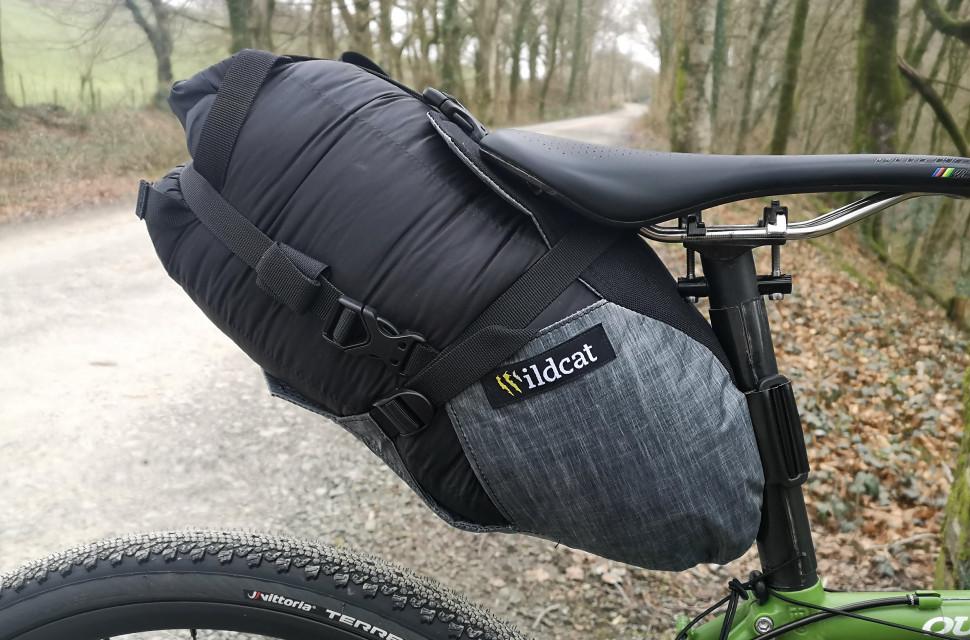


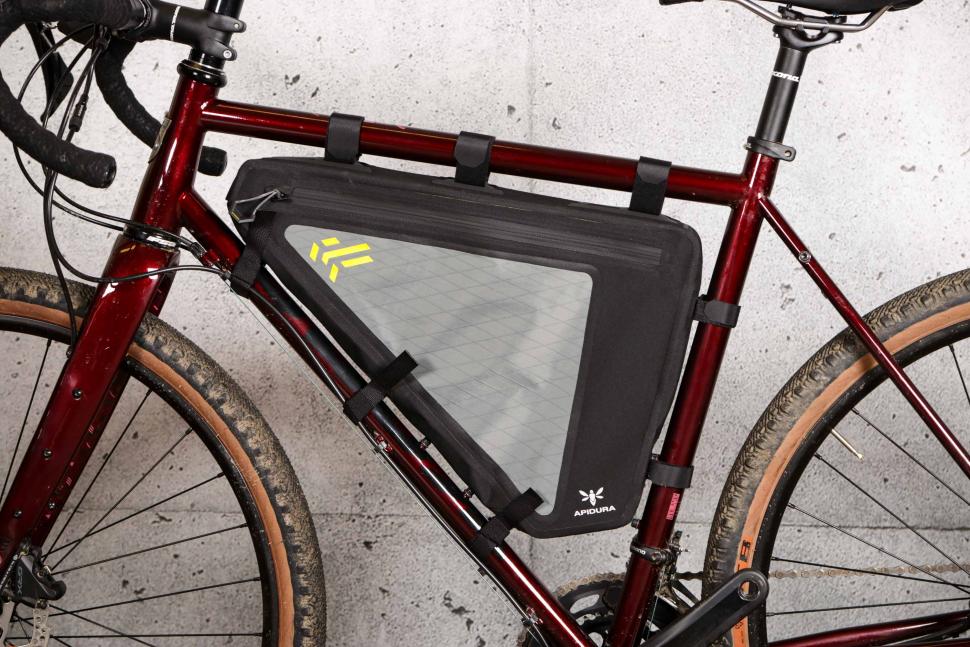
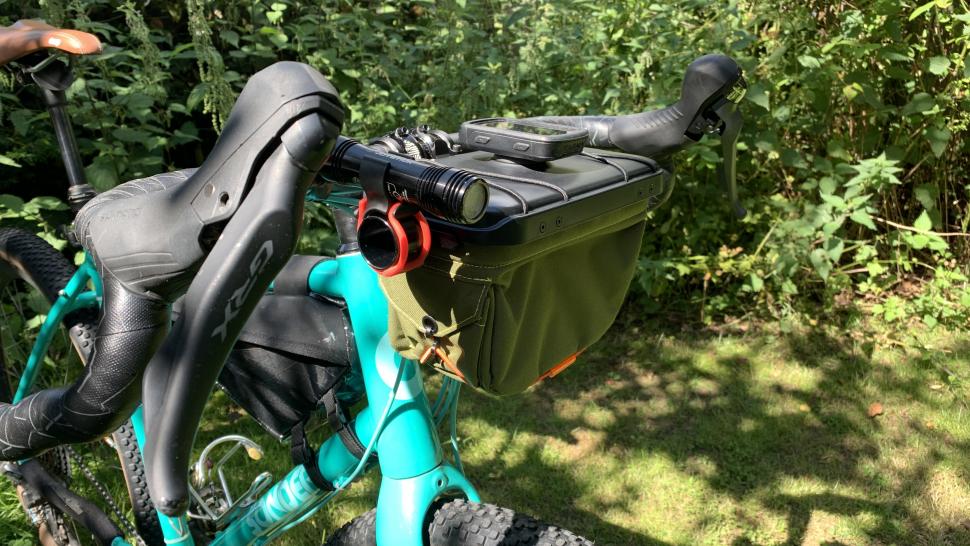
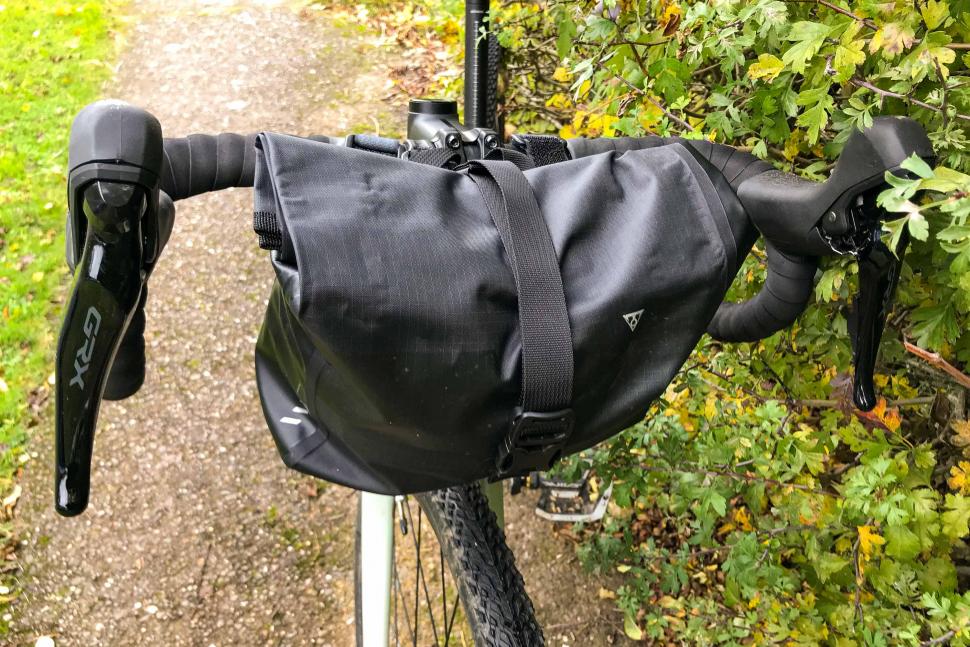
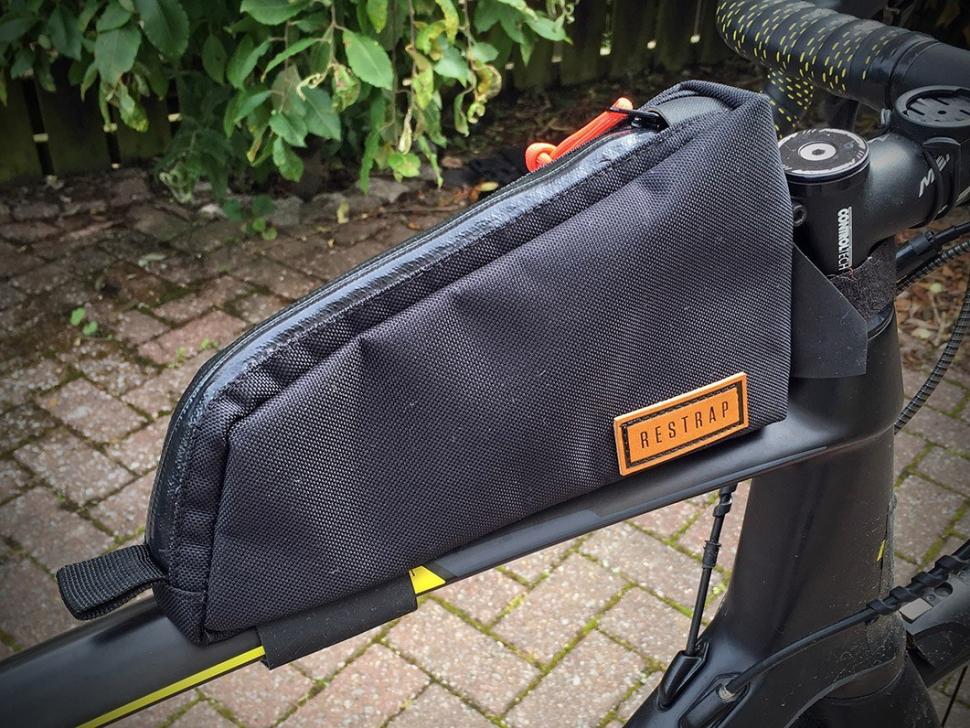
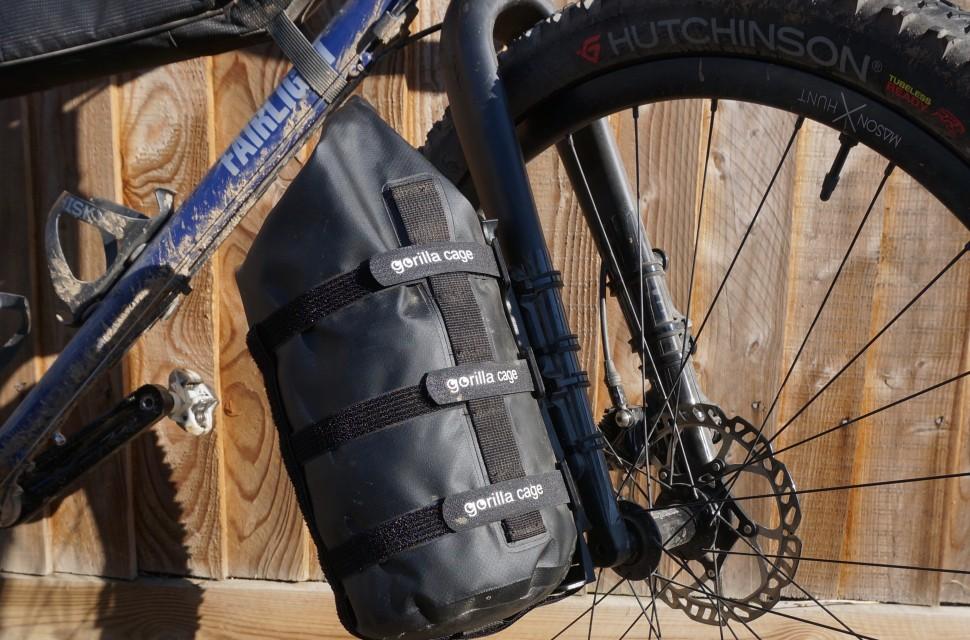


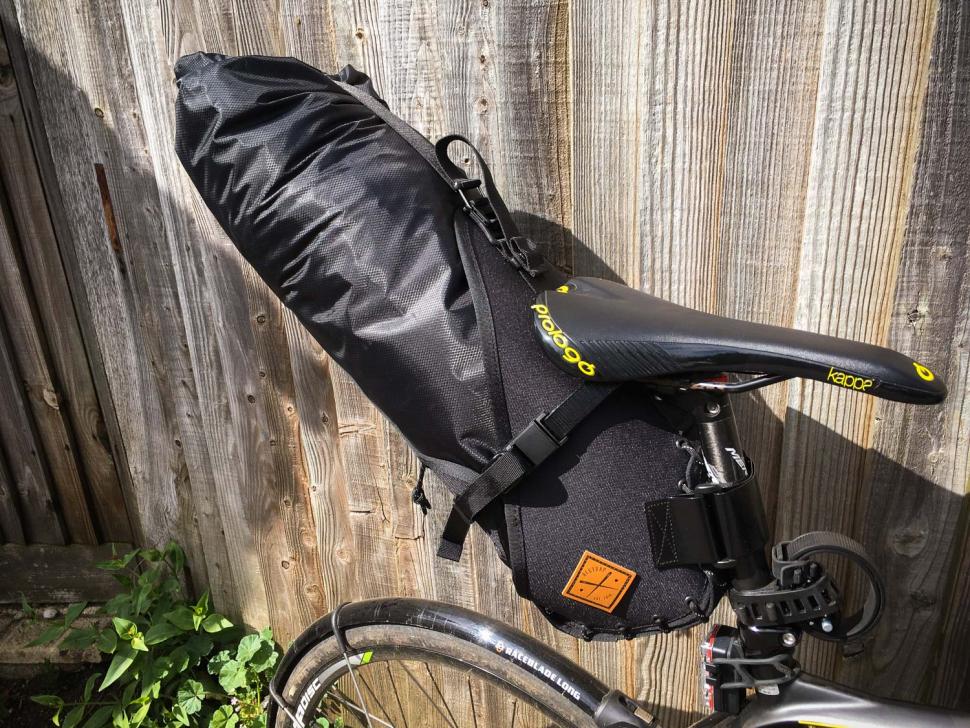
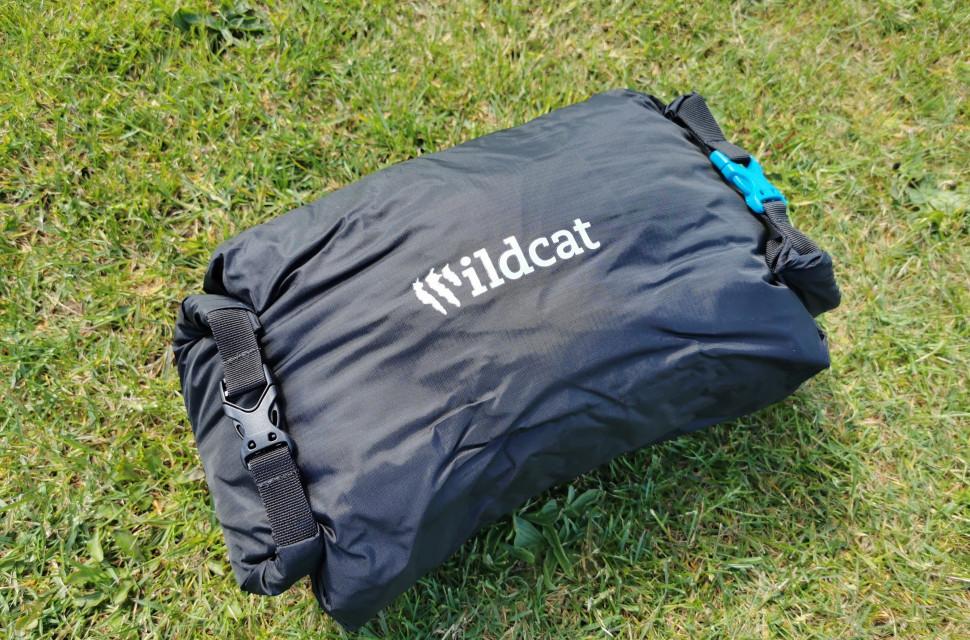
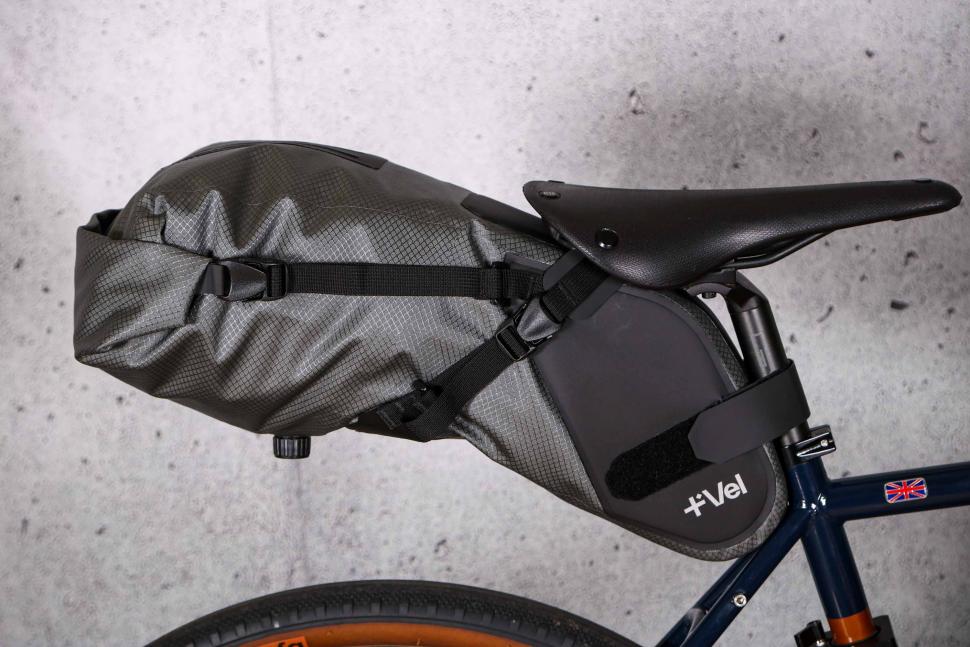
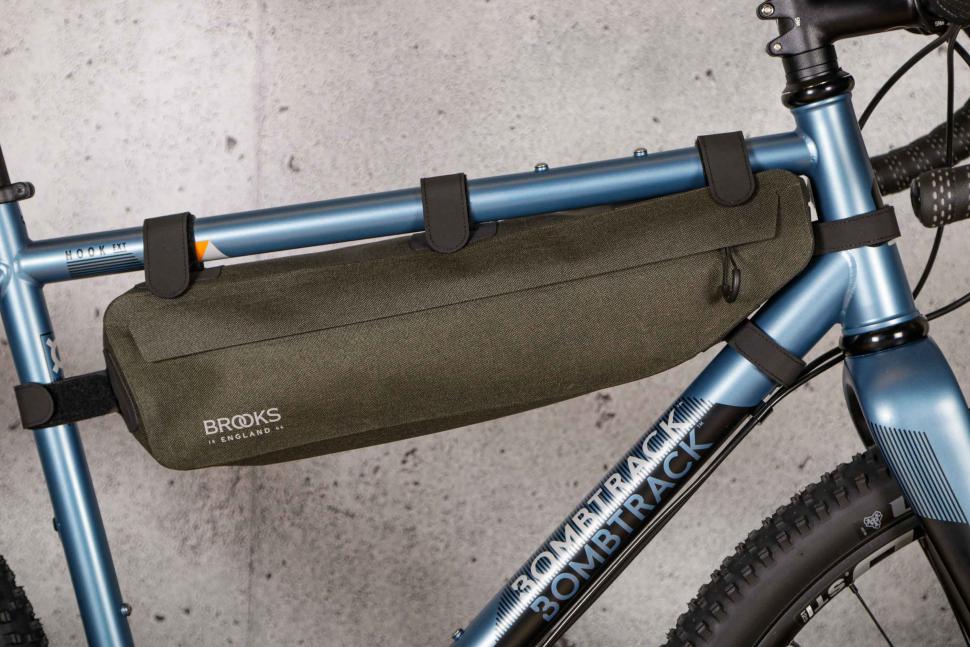
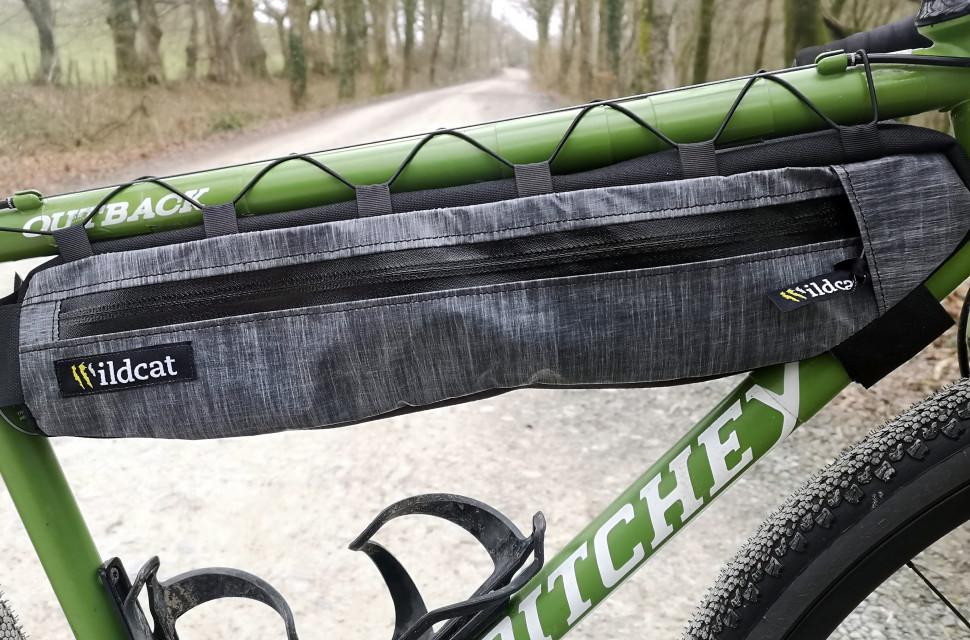
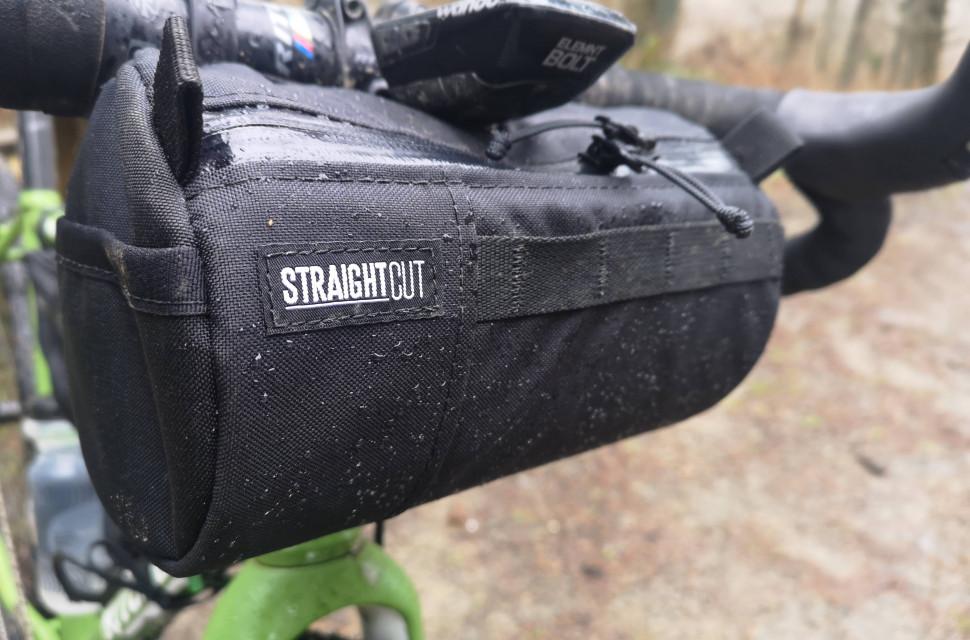

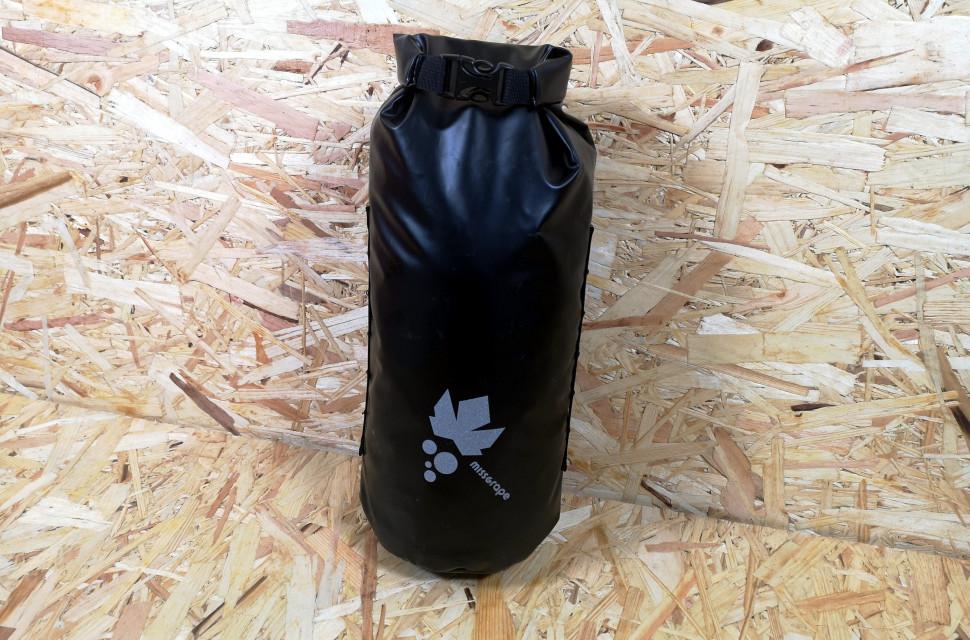
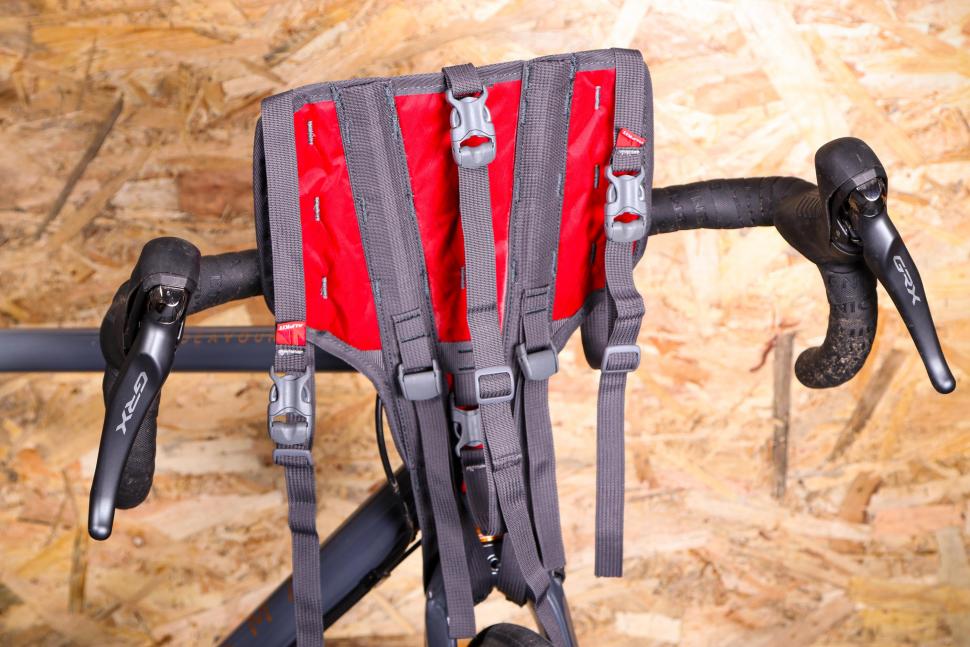

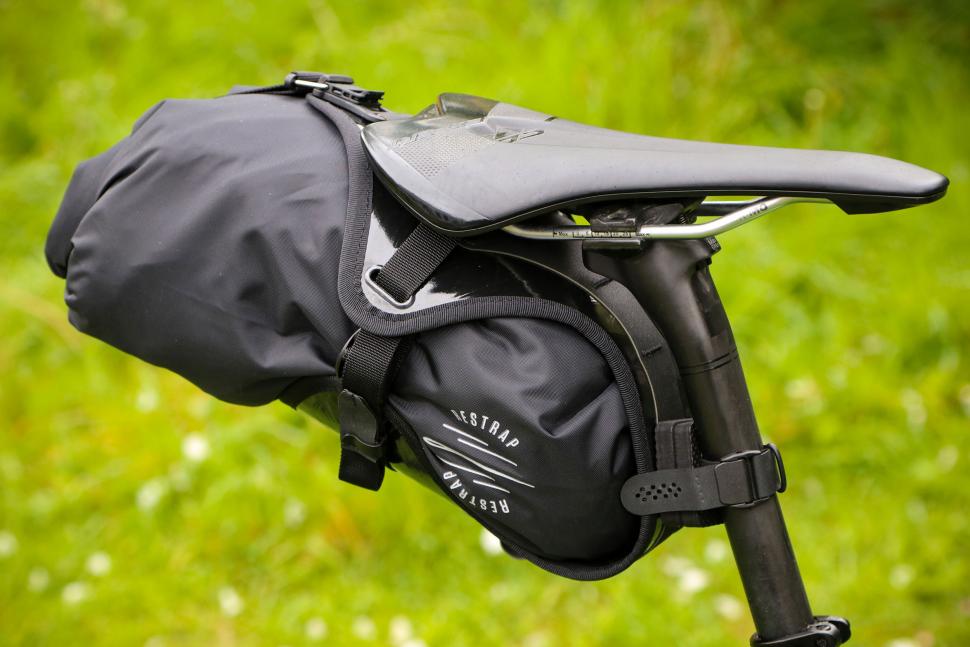
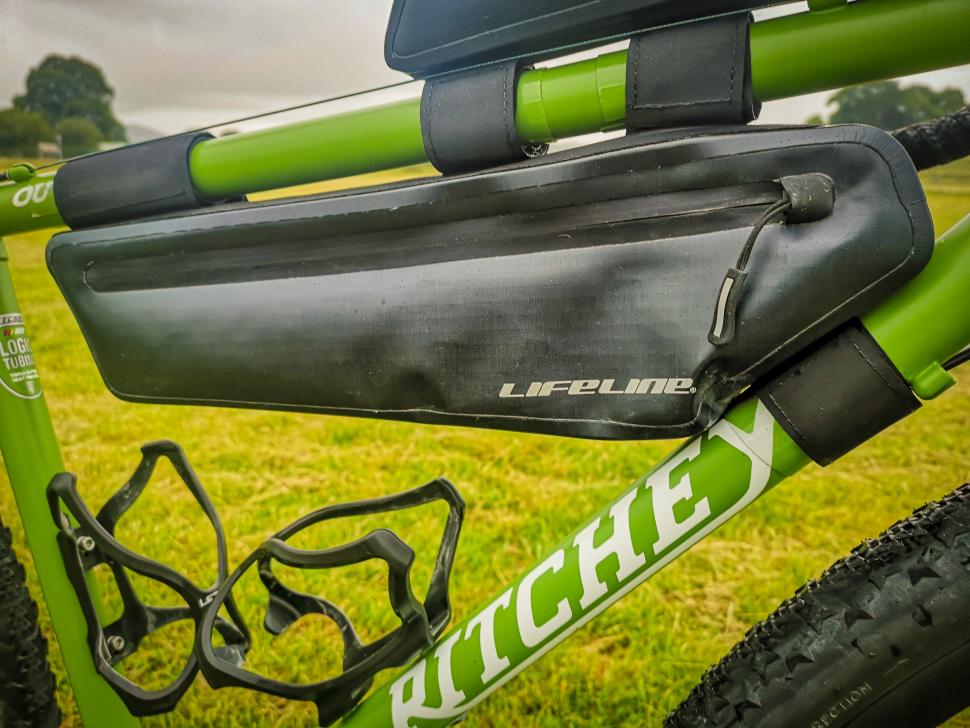
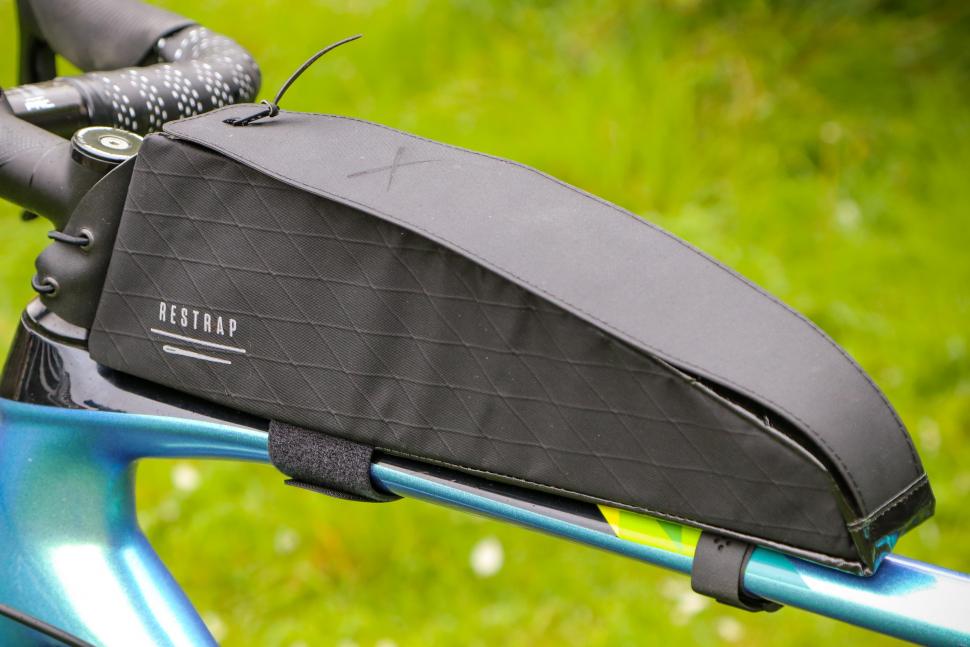
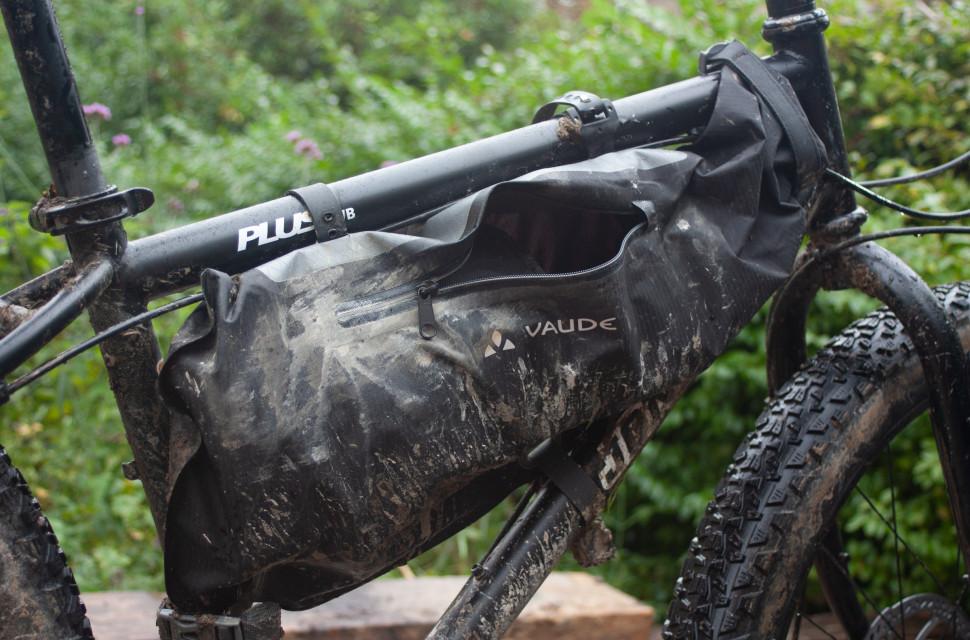
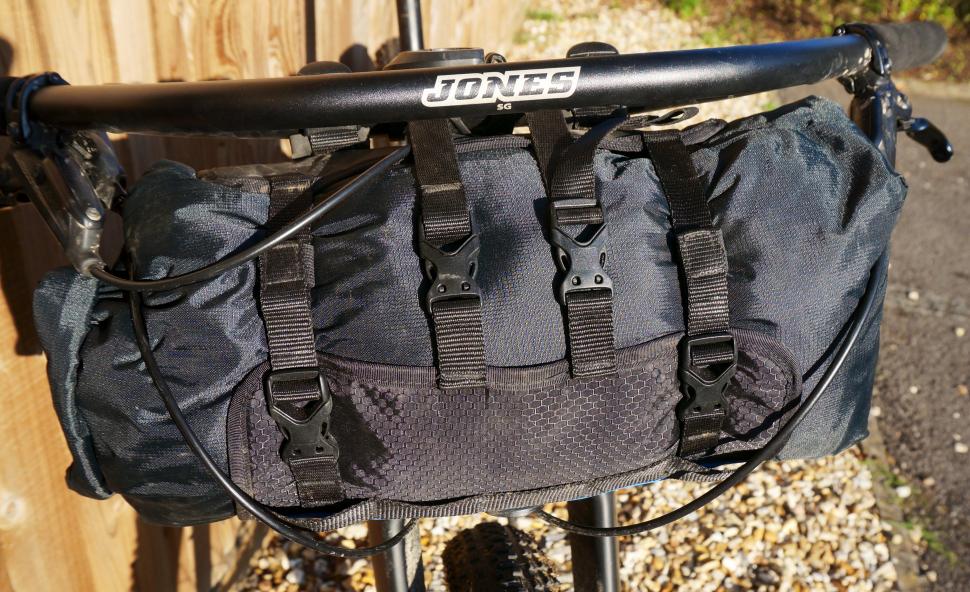

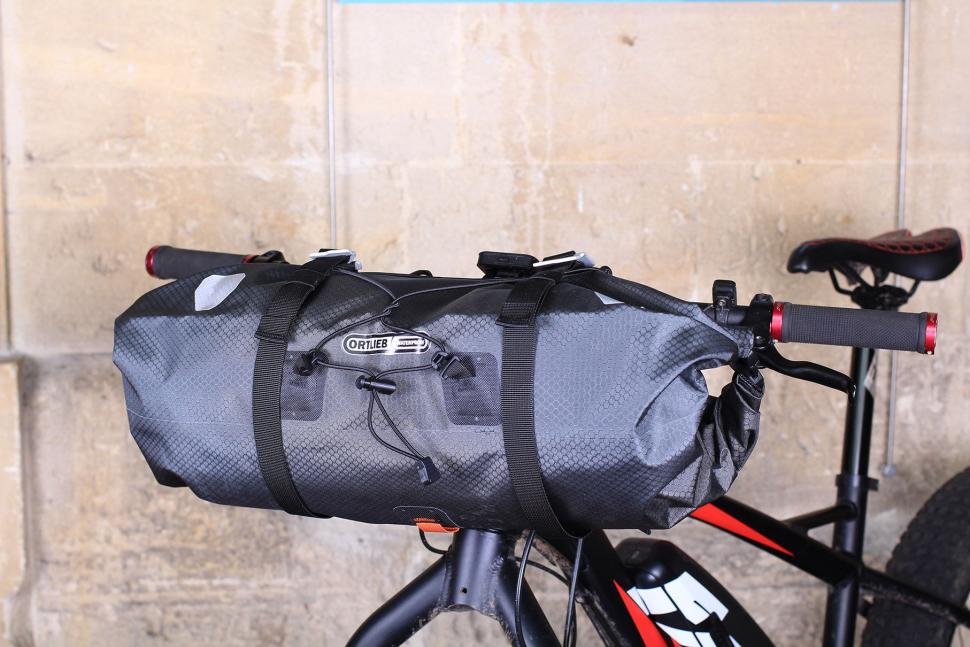
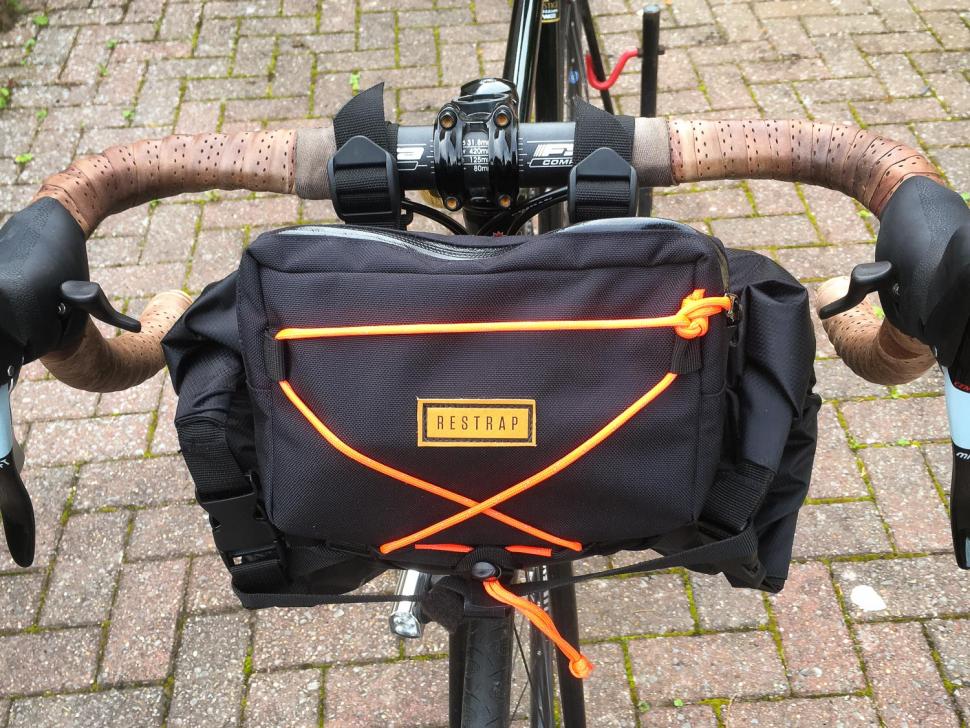
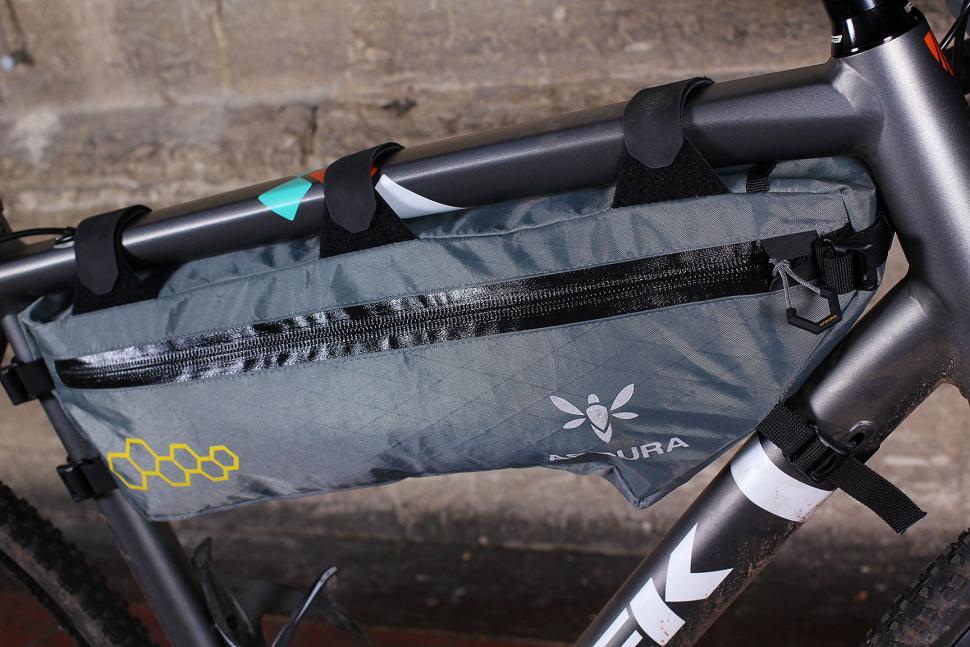
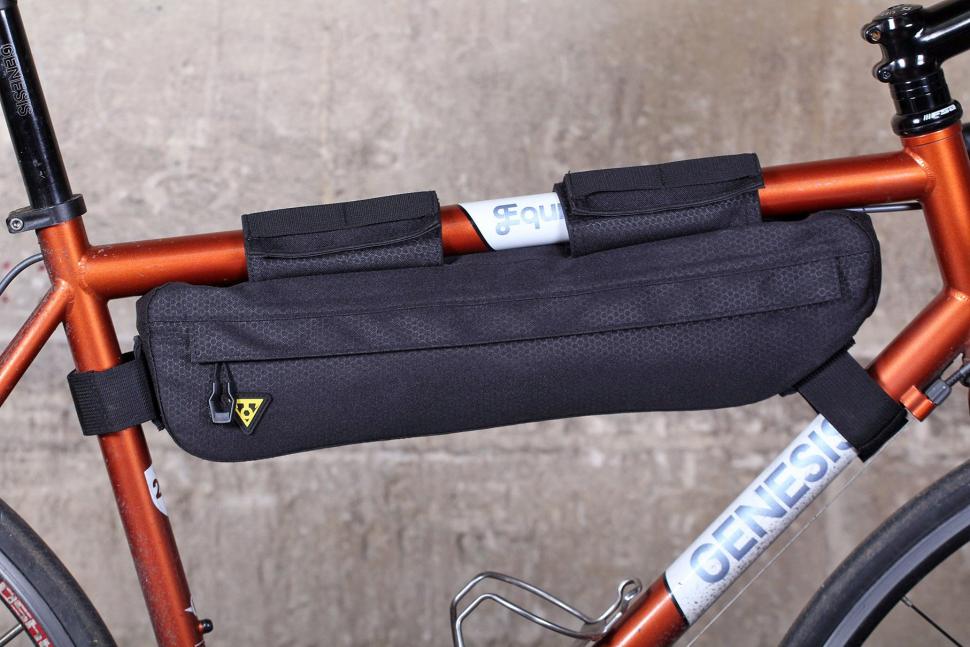
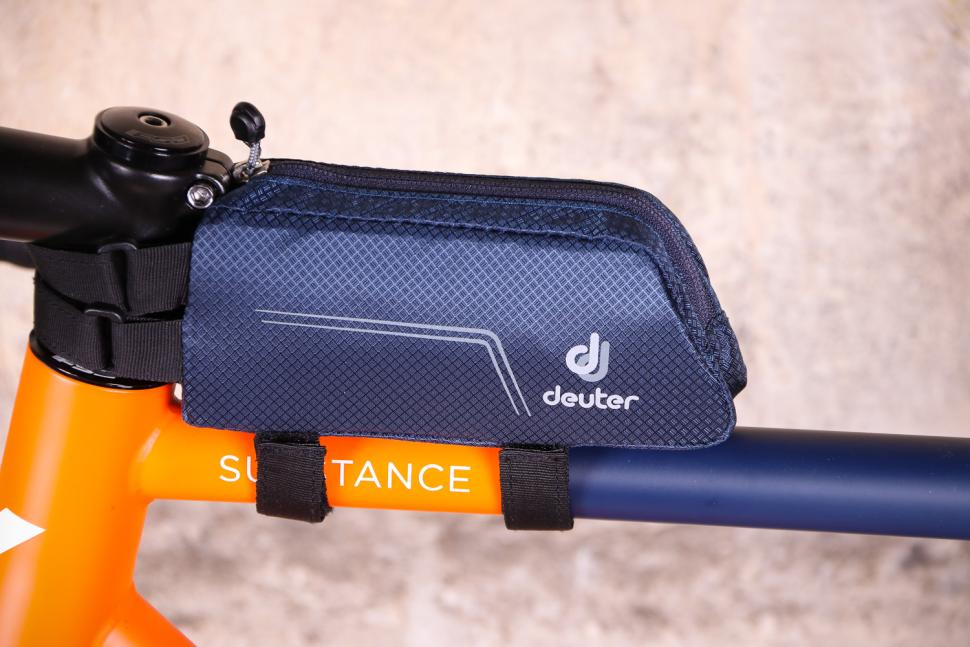
![salsa-anything-cage-hd-[3]-7185-p.jpg salsa-anything-cage-hd-[3]-7185-p.jpg](https://cdn.road.cc/sites/default/files/styles/main_width/public/salsa-anything-cage-hd-3-7185-p.jpg)

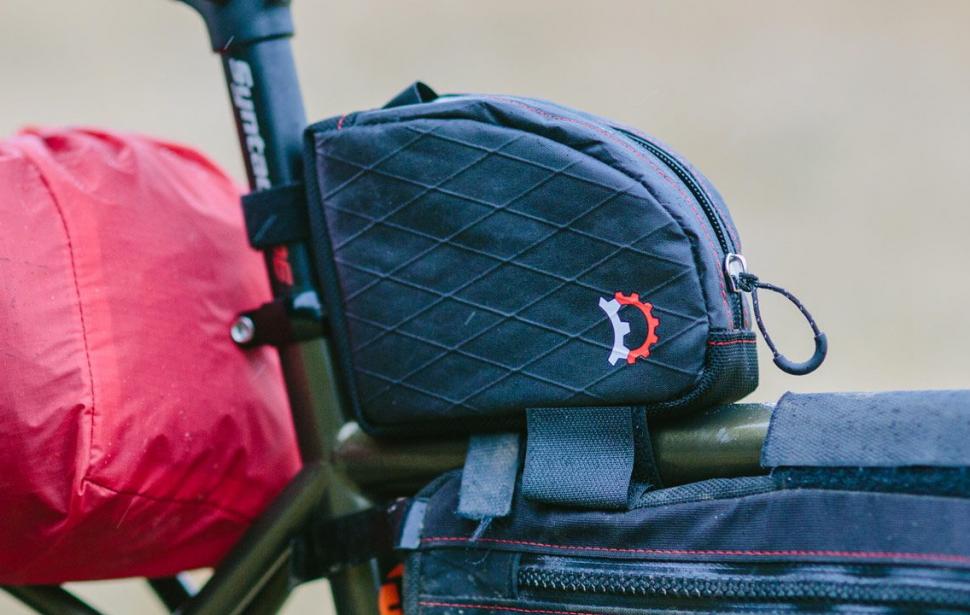
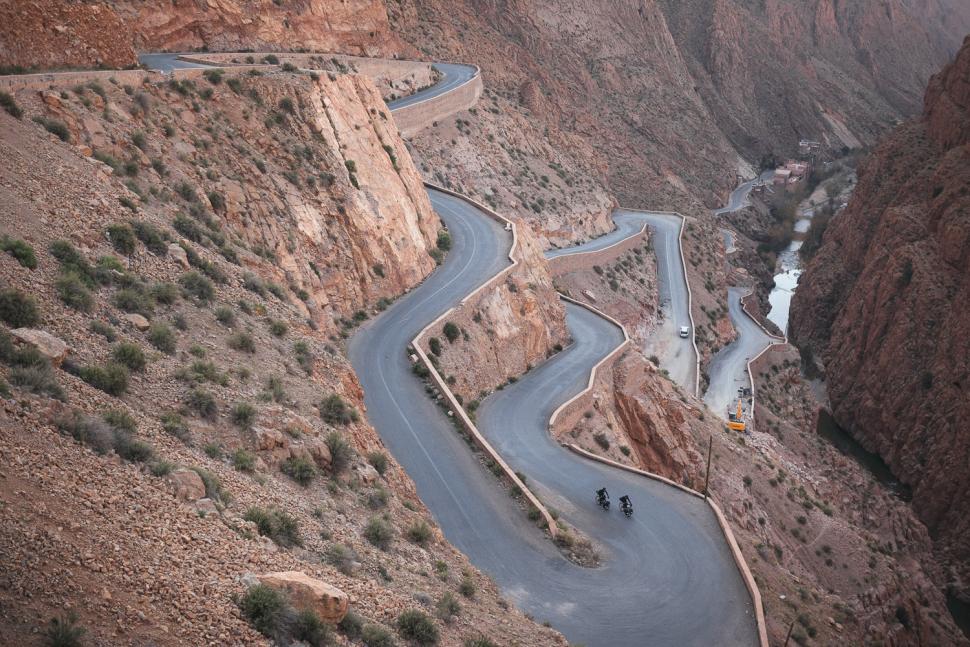
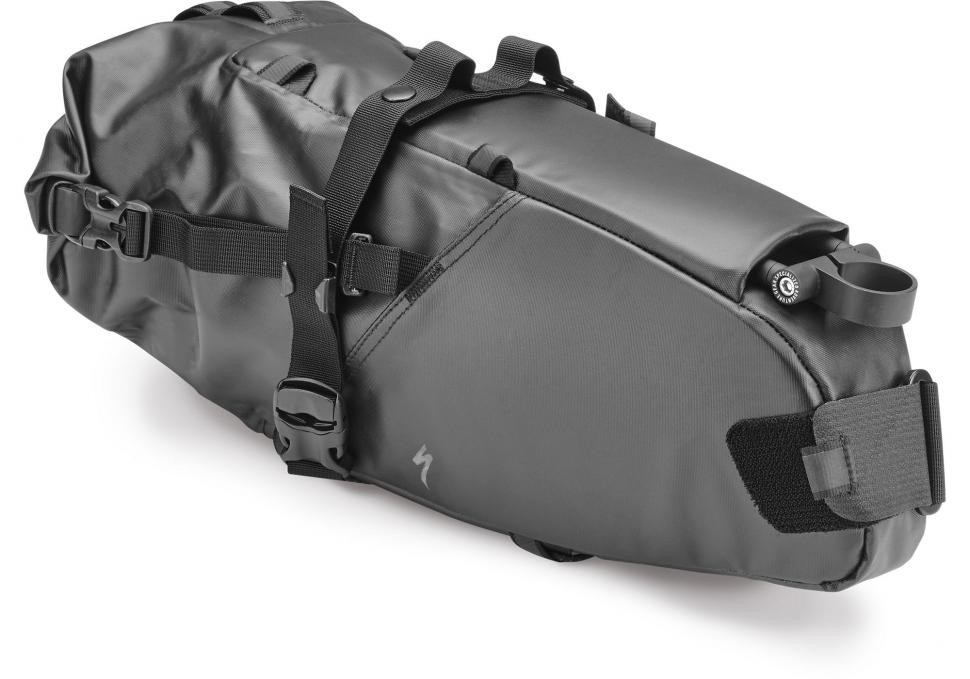



Add new comment
24 comments
Just courier it ahead to the next campsite. I understand there are services which will erect your tent and have a full-course meal with silver service awaiting your arrival after a hard day's climbing on your lightweight racer.
?
A 'lightweight racer' is a bicycle designed for road racing. It tends to have a lightweight carbon frame, drop handlebars and derailleur gears. It can be particularly suitable for climbing duties.
What's that got to do with the article or the weird thing about couriers and tent erection services ?
Okay, now you're fleshed-out your question, we can get to the meat of it.
It's simple: a courier is an alternative to carrying your luggage on your bike when going on a road trip. It stands to reason that someone is going to offer a value-added service where they erect your tent for you at your next destination (if you like camping, that is) and have a hot meal waiting for you.
Alternatively (if you don't like camping), the courier could just deliver the luggage to your next hotel.
It means you can concentrate on (and enjoy) the cycling rather than hauling all that luggage over every moutain top along the way.
Ah - I see. I thought you trying to make some point beyond the obvious, inane one. My mistake.
Alpkit's Exo-rail system provides a welcome reduction to the amount of sway you get with the Koala and similar seat bags.
I used to have a Union 34 bag, which clipped onto an L-shaped device mounted to the saddle post. When you took it off, it doubled as a rucksack. It was perfect for a change of clothes and a bunch of other useful stuff. Sadly it got stolen when our house was broken into a few years ago and you can't seem to buy them any more.
Planet X have a good range of Podsacs frame and handlebar bags. They're great value, great quality (I used a seat pack to ride from London to Paris two summers ago and it was ideal) and they currently have an additional 30% off some of the bags at the moment. Worth a look!
Surely the new Tailfin should be on the list. I bloody love mine. Would never go back to standard seat pack.
Are you using the tailfin aeropack by any chance?
How is the ride with it unloaded?
I ask because there will be times I'll leave with it empty to fill it up on the way back.
Forgot Vaude? They do very decent seat packs, stable and easily clipped/unclipped. I would not trade their system for velcros.
These types of bags are also great for everyday use. Switched to an oversize seat post bag a year ago for commuting having previously used a backpack. So much nicer to ride without a bag on your back and no lower back pain.
Dunno about you folks,but my knees run pretty close to the toptube,and anyway you're better off wrapping stuff up in bundles and taping it to the bike. Make sure you carry a knife! You can buy a lot of electrical tape for the price of one of these bags!
017.JPG
Dunno about you folks,but my knees run pretty close to the toptube,and anyway you're better off wrapping stuff up in bundles and taping it to the bike. Make sure you carry a knife! You can buy a lot of electrical tape for the price of one of these bags!
017.JPG
I've the Apidura saddle pack, which is fantastic when full, and when empty you can roll it right up to a squishy ball (eg if you're off to the shops and want to fill it with goodies). I've found the issue is when it's only got a few bits in - the thing sways about like a sail, it works best when it's crammed full as the straps pull everything up to the saddle - less full and it doesn't seem to pull up so well. I've learned through trial and error that the best way is to pack the heaviest items right at the front (ie, by the seat post) and get progressively lighter towards the opening, stops excess sway-age.
The light straps are a bit rubbish really - they're placed so that they're only useful if the bag is between half full to completely full. They're no use if the bag is empty, and as the pack takes up your whole seat post you'll need to fix a light to a seat stay or somewhere else. Also, as most lights nowadays are shaped to sit on a round seat post it's a bit of a bodge to get them to sit on right. I'm forever looking over my shoulder to check the light is still pointing backwards and not straight down to the wheel.
On a retro whim I bought one of Caradice's 'Nelson - Longflaps'* & a Bagman support - It's turned out that it's one of the best bits of cycling kit that I've ever aquired.
* Does anyone [know/care to admit that they know] of any performers in the errotic arts who go by the name of 'Nelson Longflap'?
Not quite but I did once meet a man who's surname was Whatsize who allegedly worked in that industry.
On the subject of Carradice bags I had a longflap (can't remember if it was a Camper or a Nelson) that did sterling service for years until I stored it in a damp garage for too long and it got a serious case of mildew which it never recovered from. Fantastic bags if looked after properly.
I'm leaping onto the bikepacking bag bandwagon and have bought a frame bag and a handlebar harness/drybag combo but I'm struggling with the huge seatpack idea. It just doesn't seem like a good place to mount a big bag. You get the weight high up (surely bad for balance) and you can't slide off the back of the saddle on the rough stuff.
Mark.
I remain unconvinced that hanging a sausage long enough to need an internal frame for stability off your seatpost has any significant advantage over strapping a dry bag to the top of a rack, even if you need P-clips or similar to fit the rack. A rack does take a while to fit and take off if you don't want it fitted all the time, but if you need a bag that size, presumably you're using it for more than a short day trip.
(On a typical road/touring/gravel bike or hardtail. Obviously rear suspension makes a rack trickier.)
I'm with you on this one, partly due to perceived issues with the thing swaying around and the awkwardness of packing a cone
I'm therefore sticking with a drybag on a rack - hell of a lot cheaper, even if it is a bit heavier!
Bah - young upstarts! Tha' wants Carradice Super C, lad, made in Nelson, Lancashire from cotton, leather and wood. Waterproof, bombroof and timeproof
you don't want the Super C, lad, it's a modern abomination with plastic clips. The Camper Longflap is what you want. My Super C fell apart at the seams on its first trip to France; the Camper LF is a much better design and make, and so venerable that there are pictures of them on prehistoric cave walls.
Does anyone know if the 8 litre and 14 litre restrap seat packs are identical except for the dry bag?
IE could I buy the 8 litre, then in the future buy a 14 litre drybag and use it in the same harness?